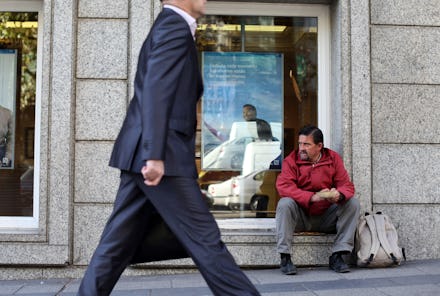BLS October Jobs Numbers: Why Did the Unemployment Rate Go Up?

A bevy of statistics have come out recently painting a picture of the current state of the U.S. economy, with the latest unemployment numbers being the most scrutinized. The numbers largely suggest that the economy is still barely out of stagnation territory, as unemployment rose slightly in addition to a drop in payroll additions for the month of October.
The unemployment rate for the month of October rose to 7.3%, a tenth of a point higher than in September. Both the delay in releasing the numbers and the small rise in unemployment were due to the two-and-a-half week government shutdown. The rise, as explained by The International Business Times, has to do with how the Department of Labor conducts its survey. Rather than using the payrolls tally, which considers furloughed federal employees as employed, it uses the household tally, which considers those same workers as unemployed. When the shutdown started, about 800,000 federal employees were sent home. However, by the time the household survey commenced, 350,000 civil defense employees were recalled, leaving at most 450,000 "unemployed."
In addition to the disappointing unemployment numbers, the economy only gained 125,000 non-farm jobs last month, an drop from the already mediocre 148,000 jobs gained last month. However, despite those numbers, the number of people applying for unemployment benefits fell by 9,000 to 336,000 last week, the lowest since the recession began. The numbers show that while employers were cutting fewer jobs, they're not hiring any new positions.
The economy actually grew 2.8% in the third quarter, much better than the meager 2% gain economists had initially predicted. The rise is, according to Nelson Schwartz of The New York Times, apparently due to a build-up in inventory, meaning that the Q4 growth rate probably will not be as high. Economic growth of 2.8% is about average, and it shows how poor the economy has been doing that exceeding predictions to an average level is a pleasant surprise for economists. However, the annual rate of growth in consumer spending dropped to 1.5%, the slowest rate in two years, in addition to a 1.7% drop in federal spending.
While things haven't reached euro zone levels of bad just yet in the United States, the economic recovery remains anemic. Gallup's underemployment number still remains high at 16.5%, and despite a drop from 17.1% in September, this number is still about a percentage point higher than this time last year. The gap between the number of job openings and number of job seekers remains exceedingly high as of August, and it's unlikely that the gap would have narrowed much in the past two months.